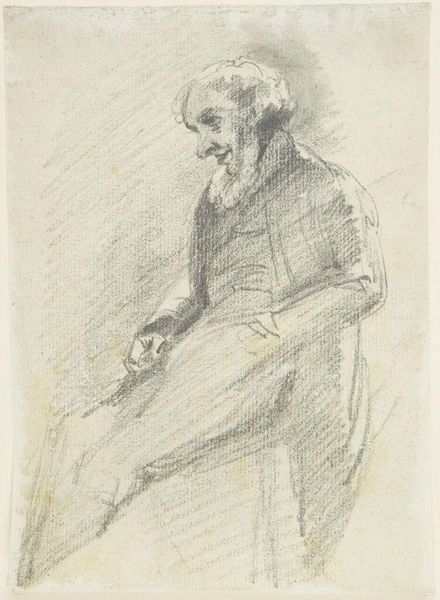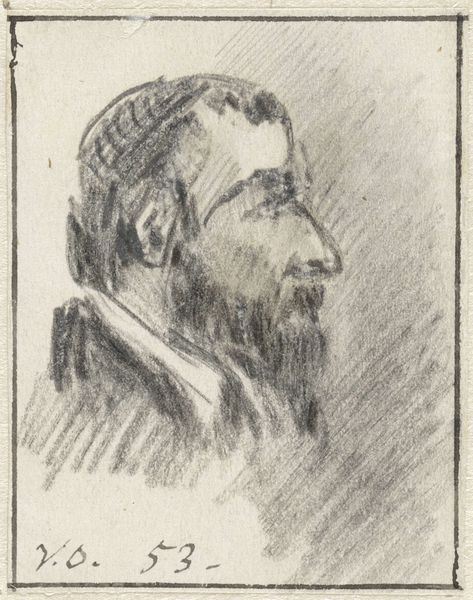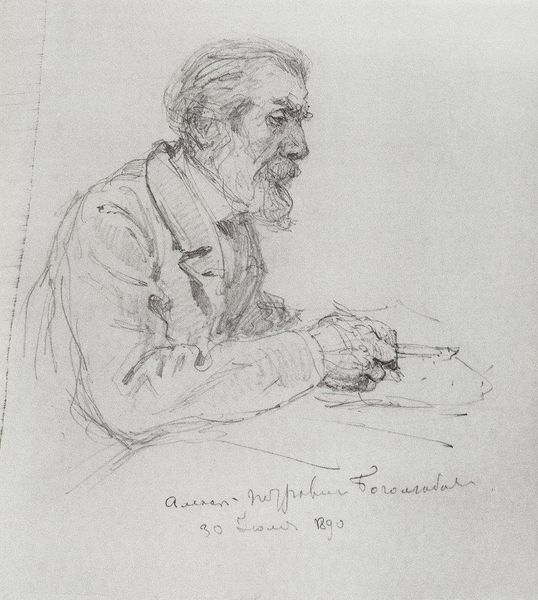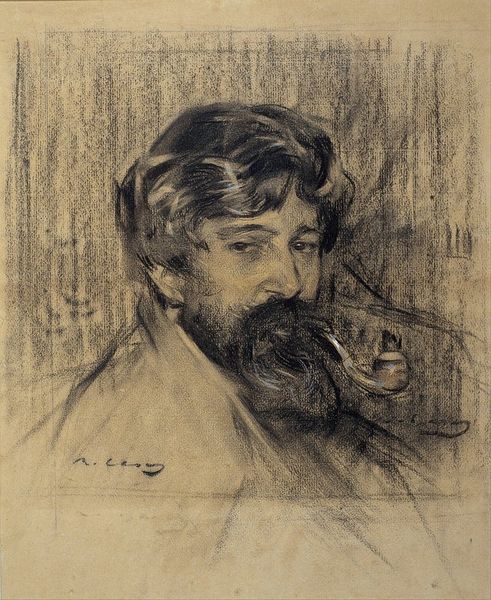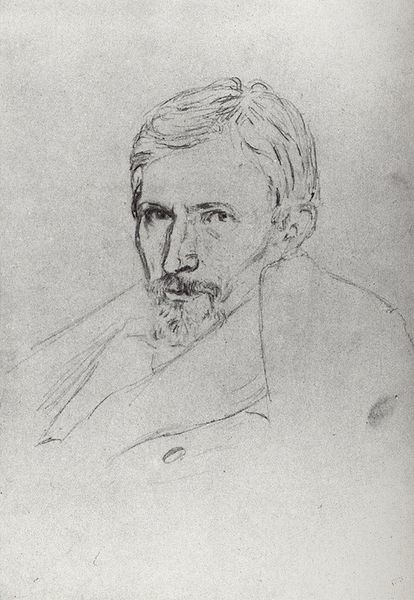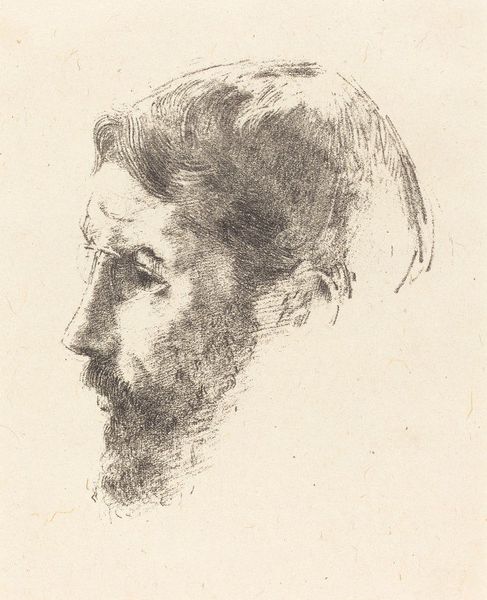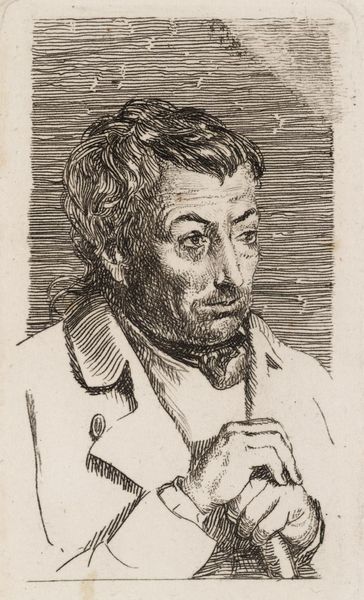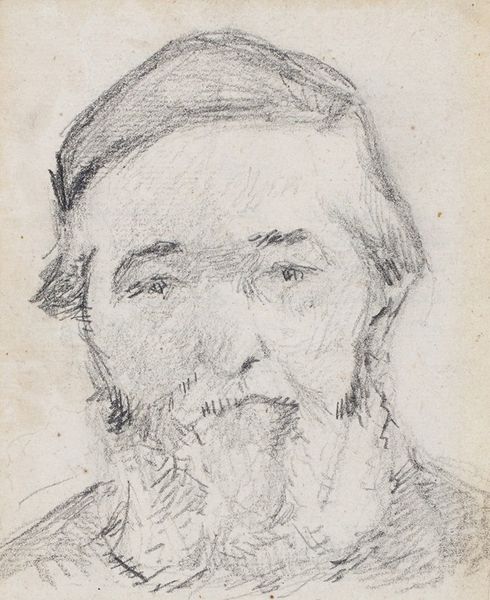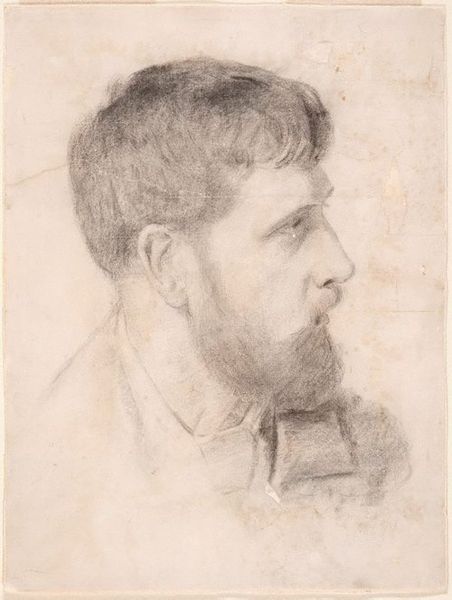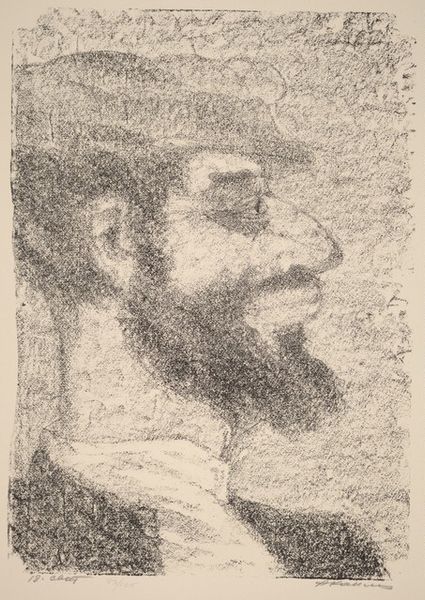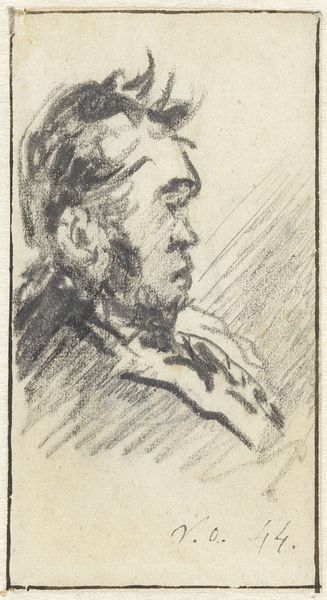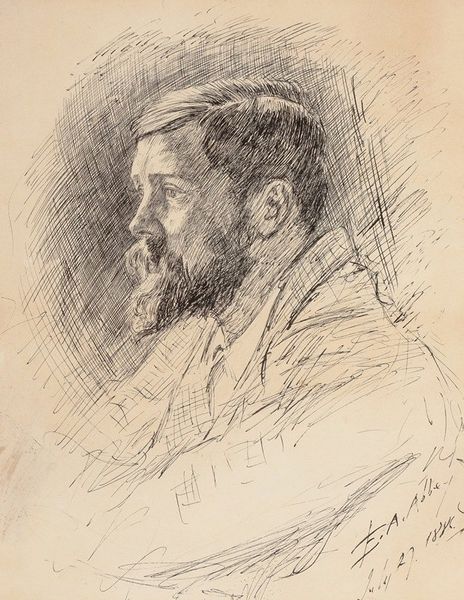
drawing, charcoal
#
portrait
#
pencil drawn
#
drawing
#
amateur sketch
#
light pencil work
#
head
#
face
#
pencil sketch
#
charcoal drawing
#
jesus-christ
#
portrait reference
#
idea generation sketch
#
pencil drawing
#
sketch
#
christianity
#
portrait drawing
#
pencil work
#
charcoal
#
realism
#
christ
Copyright: Public domain
Curator: Gazing upon Vasily Polenov's "Head of Christ" from 1885, one feels almost intrusive, like interrupting a private moment of profound reflection. Editor: My first impression is the raw physicality, you can almost feel the charcoal or graphite against textured paper, highlighting the manual labor inherent in representation. Curator: Exactly. It's more than a portrait; it's a study in texture and light, wouldn't you say? The sketchiness amplifies this effect of transient immediacy. Polenov seems less interested in traditional iconography. It is so far removed from, say, Byzantine-style mosaics depicting Jesus. It feels deeply personal, almost a self-portrait imbued with the spirit of Christ. Editor: But it also makes me wonder about the charcoal itself. Where did it come from? Who produced it? Was it locally sourced, or something more exotic, shipped across vast distances, part of a burgeoning global market for artistic materials? That seemingly simple medium has a complex history tied to industrialization and extraction. Curator: I suppose the charcoal provides more humble realism—taking us from transcendence to tangibility—yet for all its unpretentious nature, there's a monumental gravity to his downward gaze. One immediately interprets suffering. Perhaps the viewer can begin to engage with and understand that suffering through something as rudimentary and earthy as charcoal or pencil. Editor: True, but thinking about this from a purely art-historical angle—pencil, charcoal—these are often relegated to preliminary sketches, mere preparation for 'real' paintings. To see it presented so starkly questions that hierarchy, elevating the labor and material typically hidden beneath layers of oil paint. Curator: A very keen point. The artist may be asking: isn't something lost with the smoothness of a ‘finished’ product? Here we feel close to something that feels like source of creation. Editor: Right. It is about showing rather than masking the processes of making itself and making something holy by a rather everyday labor act. Curator: Looking at it again, this is the sort of piece you might ponder for a long time and not say a thing aloud to avoid diminishing something intimate in its creation and contemplation. Editor: A quiet revolution then, turning artistic conventions and even assumptions about sacredness on their head through humbleness of material and process.
Comments
No comments
Be the first to comment and join the conversation on the ultimate creative platform.
